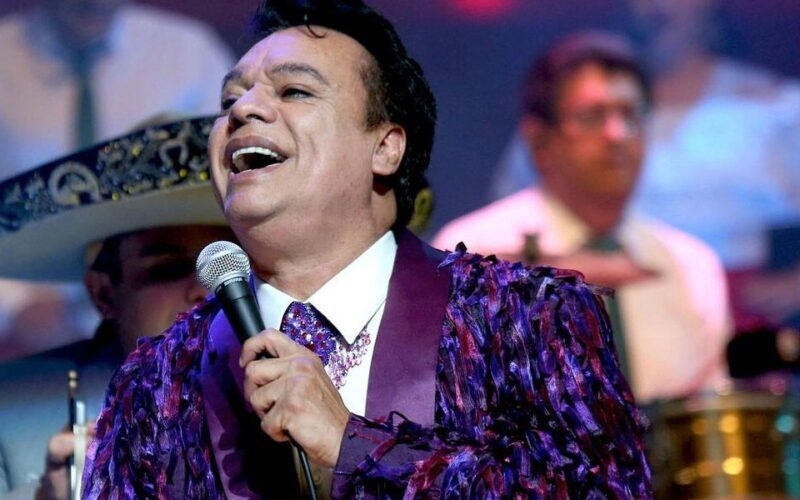Updated on: August 4, 2025
Basic Information
| Fact | Details |
|---|---|
| Born | 1912, Parácuaro, Michoacán, Mexico |
| Died | December 27, 1974, Parácuaro, Michoacán |
| Children | Mother of ten, including cultural icon Juan Gabriel |
| Hardship | Supported ten children alone after husband’s institutionalization |
| Tribute Song | Subject of Juan Gabriel’s emblematic “Amor Eterno” |
| Recent Tragedy | Great-grandson Elijah Jedidiah Aguilera passed away July 8, 2024 |
Early Life and Family Background
She was born in 1912 in Parácuaro, Michoacán, to a humble rural family. The eldest daughter of Pablo Valadez (1889–1924) and Brigida Rojas, she lost her father at 12 and took on many family chores. She married Gabriel Aguilera Rodriguez aged 17 in 1929 and raised ten children under tough financial conditions.
| Aspect | Details |
|---|---|
| Parents | Pablo Valadez (1889–1924) and Brigida Rojas, both from rural Michoacán |
| Marriage | Wed Gabriel Aguilera Rodriguez in 1929 in Parácuaro |
| Children | Ten offspring: Gabriel, Jose Guadalupe, Pablo, Rafael, Miguel, Rosa, Virginia, Alberto, and two others |
| Financial Strain | Husband institutionalized; family relocated to Ciudad Juárez in the early 1950s |
From the mid-1930s through the 1950s, Victoria managed household finances on a shoestring budget, often pooling earnings from agricultural work and small domestic tasks. The toll of single-parenting ten children without spousal support underscored her resilience and resourcefulness.
Relationship with Juan Gabriel
Alberto Aguilera Valadez, who became Juan Gabriel, was one of Victoria’s 10 children. Alberto, born in 1950, was placed in the El Tribunal children’s home in Ciudad Juárez at age four in 1954 due to the family’s financial situation. Victoria nurtured her youngest son’s emotional development through sporadic visits and letters despite their separation.
| Aspect | Details |
|---|---|
| Separation | Alberto sent to children’s home in 1954 at age four |
| Maternal Bond | Sustained via sporadic visits and heartfelt letters from 1954 to 1965 |
| Emotional Influence | Themes of longing, devotion and resilience in Juan Gabriel’s early compositions |
| Artistic Foundation | Victoria’s sacrifices cited by Juan Gabriel as the bedrock of his creative spirit |
This enduring connection between mother and son shaped the thematic core of many of Juan Gabriel’s later works, instilling a lifelong preoccupation with love, loss and familial devotion that would define his songwriting.

Inspiration and Creation of “Amor Eterno”
Juan Gabriel wrote “Amor Eterno,” one of Mexico’s most cherished bolero-ranchero melodies, after Victoria died on December 27, 1974. The song vividly depicts her “sepulcro” and the sadness of learning of her death in Acapulco, reflecting the universal grief of a kid saying goodbye to a mother.
| Element | Significance |
|---|---|
| Bereavement | Death date (Dec 27, 1974) provided the raw emotional catalyst |
| Lyrics | References to her tomb (“sepulcro”) and the sea breeze in Acapulco underscore the depth of loss |
| Musical Style | Bolero-ranchero fusion heightens emotional resonance and cultural authenticity |
| Universal Theme | Maternal devotion and mourning, making the song a fixture at funerals and Mother’s Day tributes |
Released in 1975, “Amor Eterno” became an immediate emblem of filial devotion, characterized by its plaintive melody and poetic imagery. Its structure—alternating between tender verses and crescendoing choruses—mirrors the oscillation between acceptance and yearning in the grieving process.
Recognition and Cultural Impact
Over five decades, Victoria’s legacy has been magnified through countless reinterpretations of “Amor Eterno” and institutional honors that solidify her place in cultural memory.
| Honor | Description |
|---|---|
| Congressional Archive | Archived in U.S. Library of Congress cultural collection, April 2024 |
| Rocío Dúrcal Rendition | Spanish singer’s 1980s version popularized the song across Europe, cementing its global reach |
| Ballet Adaptation | 2023 Ballet Arizona production dramatized the song’s emotional narrative through modern dance |
| Media Tributes | Featured in New York Times retrospectives, Latin American festivals and televised award ceremonies |
The song’s inclusion in the Library of Congress in April 2024 marked its elevation from regional classic to international heritage piece, enshrining Victoria’s story within a broader tapestry of maternal narratives in American cultural archives.
Recent Family Developments
Victoria’s lineage continues to navigate both celebration and sorrow, as the family contends with legal disputes and personal tragedy.
| Development | Details |
|---|---|
| Great-Grandson Loss | Elijah Jedidiah Aguilera died hours after birth on July 8, 2024 in Florida |
| Estate Disputes | Six legally recognized children contest portions of Juan Gabriel’s estimated $30 million estate |
| New Siblings | DNA tests in 2016 revealed additional offspring, prompting legal claims and media scrutiny |
| Public Statements | Family members have issued statements on grief, inheritance rights and the importance of preserving legacy |
The passing of Elijah Jedidiah Aguilera in July 2024 brought renewed reflection on the fragility of life within the family, while ongoing estate litigation and revelations of previously unknown siblings underscore the complexity of preserving Victoria’s legacy in the modern era.

FAQ
Who was Victoria Valadez Rojas?
Victoria Valadez Rojas was the matriarch of ten children in rural Mexico, whose perseverance through poverty and personal loss laid the emotional groundwork for her son Juan Gabriel’s career.
What inspired “Amor Eterno”?
Juan Gabriel wrote “Amor Eterno” in late 1974 to memorialize his mother’s death on December 27, 1974, channeling his grief into lyrics and melody.
How has her legacy been honored?
Her legacy endures through global performances of “Amor Eterno,” archival preservation in the U.S. Library of Congress and adaptations such as ballet and tribute recordings.
Which news has influenced her family?
In July 2024, her great-grandson Elijah Jedidiah Aguilera’s death and ongoing estate disputes among Juan Gabriel’s children have shaped recent family narratives.
References
| Source | Description |
|---|---|
| https://www.encyclopedia.com/education/news-wires-white-papers-and-books/reizes-stephen-steven-reizes | Early life and education details: Student Award at Festival des Films du Monde in 1981 for ‘Second Story Man’, BFA in Film Production from Concordia University, and active membership in the Canadian Society of Cinematographers. |
| https://www.imdb.com/name/nm0718716/ | Career credits and accolades: Camera operator and cinematographer on ‘Cold Squad’, Director of Photography on ‘Flashpoint’ and ‘Sort Of’, including a 2022 Gemini Award nomination; personal detail on spouse Lauri Hendler. |
| https://en.wikipedia.org/wiki/Mel_Hoppenheim_School_of_Cinema | Academic affiliation: Concordia University’s Mel Hoppenheim School of Cinema as the institution where Reizes earned his BFA in Film Production. |
| https://www.ia667dp.com/cinematographers/stephen-reizes/ | Technical innovation and guild listing: Early adoption of the ARRI Alexa digital cinema camera on ‘Flashpoint’ and listing by the International Cinematographers Guild IATSE 667. |






